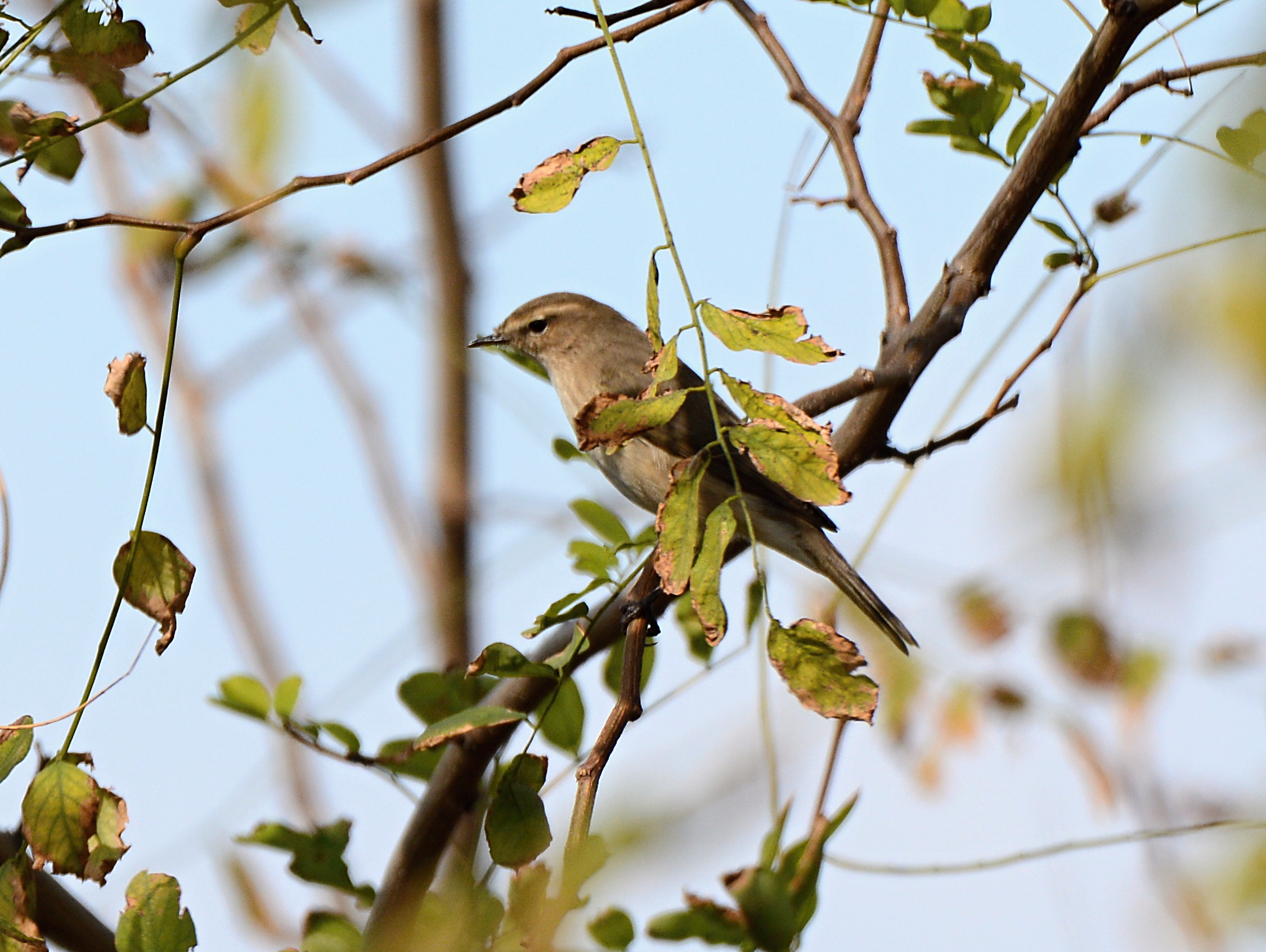
Earlier this winter(November 2014), we had a jumbo bird (not in terms of size) in Shanghai. Dr.Kai Pflug, fellow expat birder in Shanghai sent me couple of photos to verify the ID from his recent trip to Nanhui. Due to the complex ID metrics involved in the Phylloscopidae family and they being the majority of the birds which pass through Shanghai during the spring and fall migration, i was trying very much to add more species from Phylloscopidae family to my Shanghai list. It wasn’t a very successful mission but i focused on improvising myself with the Phylloscopus warblers. To feed my hunger, Dr.Kai’s Warbler was not just an usual bird.
When i noticed the overall olive brown tone, black legs, short black bill, buffish yellow supercilium, short primary projections, i just could not believe my eyes, am i looking at the “Siberian Chiffchaff?” here. It’s indeed an Siberian Chiffchaff, a very handful of records in the whole China.
Siberian Chiffchaff(Phylloscopus collybita tristis) breeds in the Ural mountains and winters in North India and Bangladesh.
Let’s hear from Dr.Kai Pflug on scoring this huge rarity,
“I kind of like warblers – not sure whether it is fashionable to say this among experienced birders (I am not), but I do like them. In particular, I like it when they hold still long enough for me to take a photo of the whole bird, not just a blurred wing or an empty twig. So I was moderately delighted to take a photo of one on a recent trip to Nanhui, just a few meters away from the sea. Then I turned my attention back to the hoopoe, which (inexperienced birder that I am) still holds much more of an attraction to me.
Fortunately, I later sent the photo of said warbler to Dev, and he told me I saw a rarity in China, a Siberian chiffchaff. Now I have to say it still would not destroy my world if the bird eventually turned out to be a tree sparrow in a Halloween costume, but hearing this was nice anyway. My usual way of identifying a bird I am not sure about is just to think it must be the most common one – apparently this is not always right. Who would have thought …”
Many thanks to Dr.Kai Pflug for letting me use his photo on my site and his nice article which expresses his humbleness.
My hunt for the Phylloscopus’s will certainly continue on the next season as well among the “ethical/sensible/birders(?)/photographers” of this great city.

Recent Comments